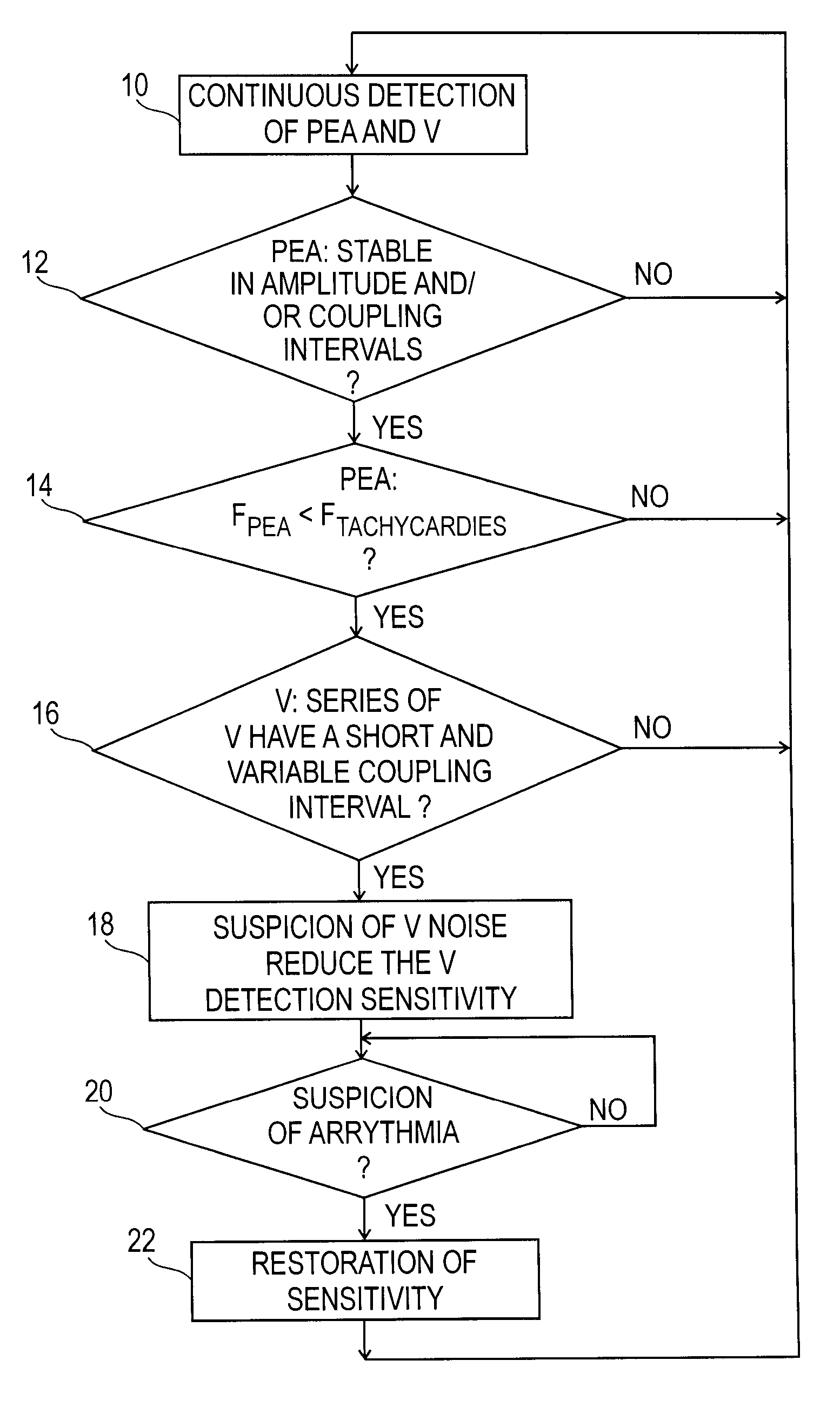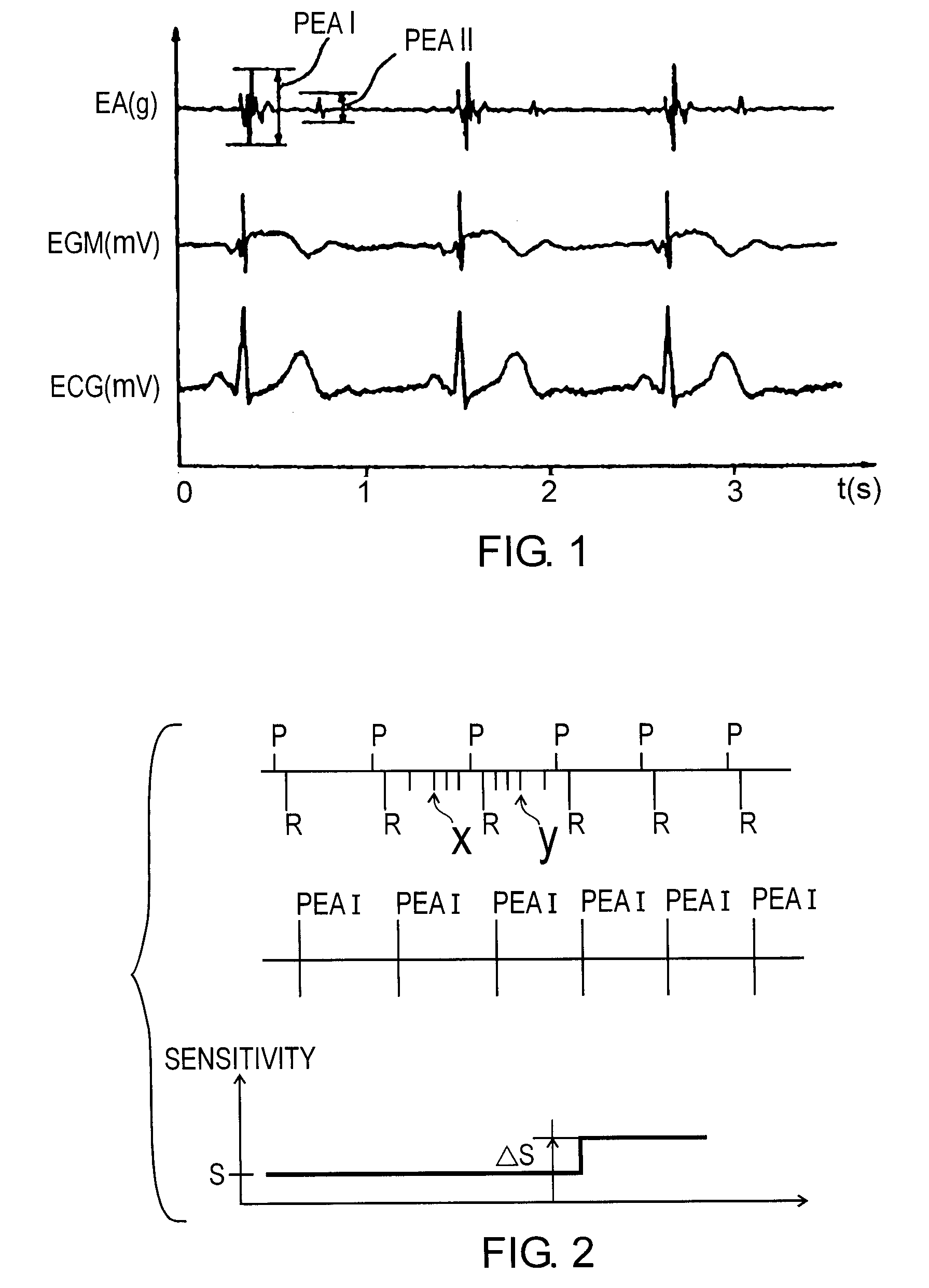Detecting ventricular noise artifacts in an active implantable medical device for pacing, resynchronization and/or defibrillation of the heart
a technology noise artifacts, which is applied in the field of active implantable medical devices, can solve the problems of generating inappropriate therapies, affecting the effect of good sensing, and using such techniques is always detrimental to good sensing, so as to prevent the triggering of inappropriate therapies
- Summary
- Abstract
- Description
- Claims
- Application Information
AI Technical Summary
Benefits of technology
Problems solved by technology
Method used
Image
Examples
Embodiment Construction
[0037]One will now describe a preferred embodiment of the device of this invention, with reference to FIGS. 1-3.
[0038]Regarding the software-related aspects thereof, the present invention can be implemented by an appropriate programming of the soft-ware of a known active implantable device, for example, of the pacemaker or defibrillator / cardiovertor type, comprising means for acquiring a signal provided by endocardial leads and / or one or more implanted sensors.
[0039]The invention can notably be applied to the implantable devices ELA Symphony and Rhapsody pacemakers marketed by ELA Medical, Montrouge, France.
[0040]These devices are equipped with programmable microprocessors, including circuits intended to acquire, format and process electrical signals collected by implanted electrodes, and deliver pacing pulses to these electrodes. It is also possible to upload towards these devices, by telemetry, software routines (updates, enhancements and new programs), that will be stored in inte...
PUM
 Login to View More
Login to View More Abstract
Description
Claims
Application Information
 Login to View More
Login to View More - R&D
- Intellectual Property
- Life Sciences
- Materials
- Tech Scout
- Unparalleled Data Quality
- Higher Quality Content
- 60% Fewer Hallucinations
Browse by: Latest US Patents, China's latest patents, Technical Efficacy Thesaurus, Application Domain, Technology Topic, Popular Technical Reports.
© 2025 PatSnap. All rights reserved.Legal|Privacy policy|Modern Slavery Act Transparency Statement|Sitemap|About US| Contact US: help@patsnap.com



